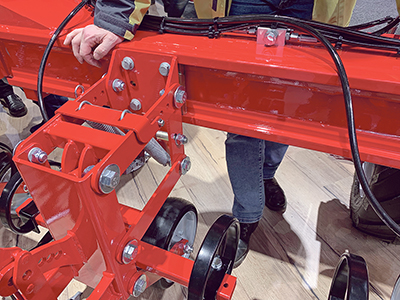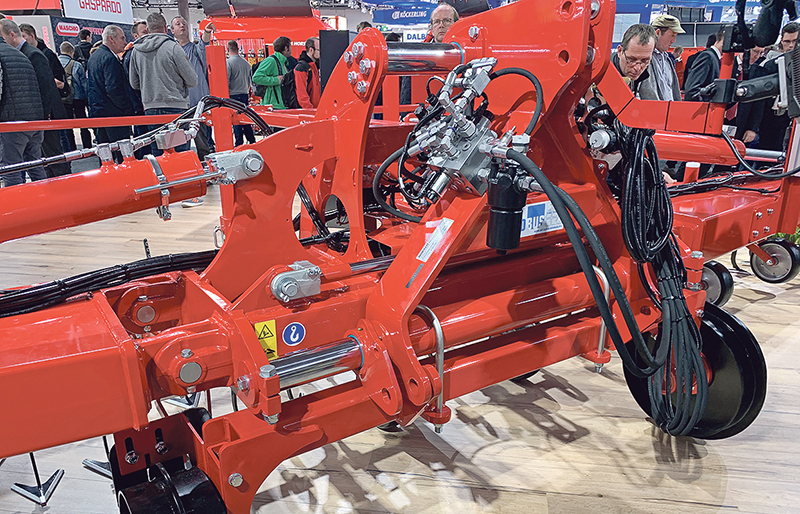The new hoeing tool was designed in part as a response to increased public pressure on herbicides in Europe
HANNOVER, Germany — Horsch launched a new hoeing tool for in-the-row cultivation that will interest organic producers and growers struggling with herbicide resistant weeds.
“It’s our first inter-row cultivator the company Horsch has built,” said Eileen Nicolai of Horsch during Agritechnica.
“We think that the organic farming, at least here in Germany and in Europe, is getting more and more popular and more and more important, so that’s why the company Horsch is also now producing machines for this type of farming.”
She said this venture outside of the company’s typical tillage, seeding and spraying product line-up is a response to the public pressure on herbicides, which is already changing how farmers establish and manage their crops in Europe.
The Transformer VF is based on an integrated three-point hitch-mounted frame that automatically slides the tool bar laterally to keep shovels between the rows, with the help of a camera-based guidance system.
Nicolai said the camera on the Transformer 12 VF on display at the German farm show was built by Claas, but the tillage is Isobus compatible and so can be fit with many types of cameras.
The 12-metre bar is the largest currently available with six, eight and 10 metre widths also on the market.

The six and eight metre bars fold in three sections, while the nine and 12 metre bars fold up in five sections to achieve a transport width of three metres and a height of four metres.
“In Europe and Germany we have a lot of laws and if you want to drive with a machine like this on the street, it isn’t allowed to be wider than three metres. That’s why the transporting width for all of our machines is always three metres,” Nicolai said.
The working depth can be quickly set without tools by moving the setting handle located on the top of the gauge wheel frames.
The Transformer VF comes with a section control system that picks up individual row sections when the GPS guidance system identifies areas that have already been covered.
Read Also

Europe holds promise for Canadian lentils
Pulse Canada is trying to help boost lentil consumption in Europe, which is already the fourth largest market.
In hard ground, operators can apply hydraulic down force to help maintain depth.
The frames that hold the hoes can be easily moved along the toolbar because of its design, which gives operators many options in terms of where the ground engaging tools are set.
“Everything is very flexible. The row widths can be up to 90 centimetres wide, or 25 centimetres, whatever you need to do,” Nicolai said.

A wide range of tools are designed to work in between crop rows, which bolt on to the attachment space on the toolbar. They include finger rolls and covering discs for the hoeing tools, which help protect young crops.
A design feature of the Transformer VF has the wings lift automatically when the implement is raised during headland turns to reduce operator strain and to help prevent contact with obstacles along the edge of the field.
“So far we’ve built this machine only for the European market. We will start in the European market, and the North American market will come soon, but I can’t tell you when this is going to be,” Nicolai said.
















